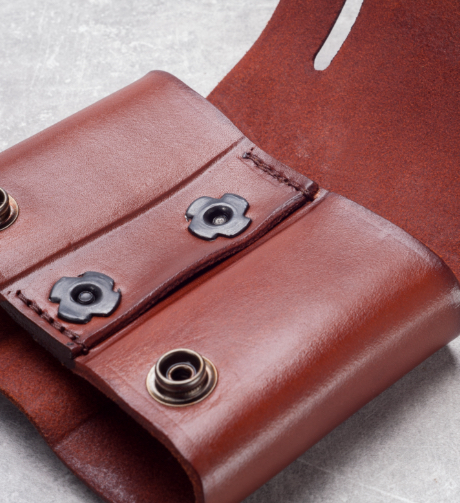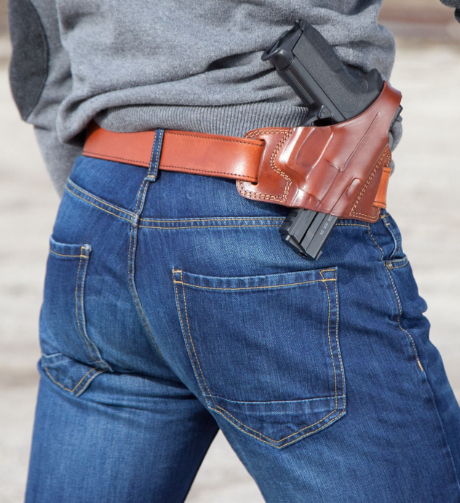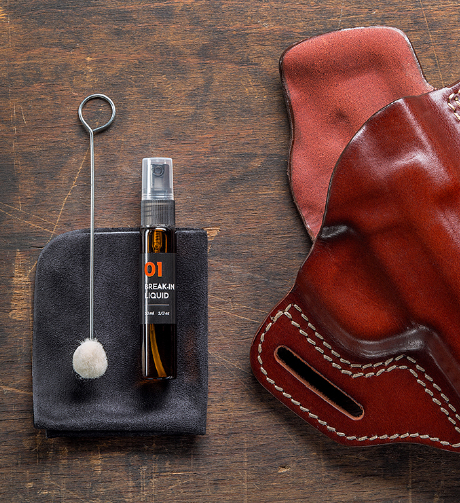Craft Holsters - Holsters
Select Your Gun & Holster Up
Fan Favorite Holsters
Check All Holster Carry Styles
- Sale
- IWB
- OWB
- Ankle
- Appendix
- Belly Band
- Chest
- Concealed Carry
- Cross Draw
- Drop Leg
- Duty
- Paddle
- Shoulder
- Small Of Back
- Backpack Holsters
- Bandolier Holsters
- Bedside Holsters
- Belly Band For Fat Guys
- Belly Bands for Women
- Duty Accessories
- Beltless Holsters
- Bicycle Holsters
- Car Holsters
- Clip On Holsters
- Competition Holsters
- Concealed Carry Holsters For Fat Guys
- Concealed Carry Holster for Woman
- Custom Holsters
- Double Shoulder Holsters
- EDC Holsters
- High Ride Holsters
- Hip Holsters
- Holsters For Women
- Hunter Holsters
- Hybrid Holsters
- IWB Holsters For Fat Guys
- John Wick Holsters
- Level II Holsters
- Level III Holsters
- Low Ride Holsters
- Magnetic Holsters
- Mid Ride Holsters
- Minimalist Holsters
- Molle Holsters
- Motorcycle Holsters
- Open Carry Holsters
- Pancake Holsters
- Police Holsters
- Purse Holsters
- Quick Draw Holsters
- Retention Holsters
- Holsters For Running
- Shoulder Holsters For Fat Guys
- Shoulder Holsters For Women
- Slim Fit Holsters
- Sweat Guard Holsters
- Sweatpants Holsters
- Trigger Guard Holsters
- Tuckable Holsters
- Velcro Holsters
- Vertical Shoulder Holsters
- Western Holsters
Welcome to your one-stop destination for quality gun holsters, where we prioritize not only the safety of your firearm but also comfort and style. Whether you are in search of handgun holsters for personal protection or gun holsters for concealed carry, Craft Holsters has got you covered with an extensive range of products catering to your unique preferences.
Unparalleled Variety of Gun Holsters
At Craft Holsters, we specialize in offering an unparalleled variety of gun holsters that perfectly balance quality with functionality. From custom gun holsters that cater to your specific needs to concealed gun holsters that ensure maximum safety, our selection promises to deliver the utmost satisfaction. Our exclusive line of gun holsters for women also ensures that every gun owner finds the ideal fit and style that complements them.
Handgun Holsters
Discover our diverse range of handgun holsters that blend durability with easy accessibility. Each handgun holster is designed with precision to provide a secure fit for your weapon, ensuring peace of mind at all times. Our offer of pistol holsters and revolver holsters can be currently customized for over 2,400 different gun models and they come in all the carry styles you can imagine.
Gun Holsters for Concealed Carry
Explore our collection of gun holsters for concealed carry, offering you the discretion and comfort you desire. These concealed carry holsters are crafted to be unobtrusive while keeping your firearm within arm's reach, ready for use at a moment's notice. The most popular types of holsters for concealed carry are IWB holsters, appendix holsters, and belly band holsters.
Gun Holsters for Open Carry
Take a look at our selection of open carry holsters, including many carry styles such as shoulder holsters, OWB holsters, cross-draw holsters and many more. If you’re looking for an open carry gun holster that blends impeccable style, perfect fit, and high carry comfort, you’ve just found it.
Custom Gun Holsters
Make your mark with our custom holsters that offer a personalized touch. Whether you desire intricate patterns or a specific build, we cater to all your unique demands with precision and artistry.
Gun Holsters for Women
We take pride in our exclusive range of gun holsters for women, designed with style and functionality in mind. These holsters not only cater to the aesthetic preferences but also promise comfort and convenience without compromising on safety.
Gun Holsters FAQ
What is a Gun Holster?
A gun holster is a device used to securely hold, protect, and provide easy access to your firearm. It can be attached to various parts of the body or clothing, offering comfort and quick accessibility during times of need.
How are Gun Holsters Made?
Gun holsters are made using various methods and materials to suit different requirements. The crafting process often involves meticulous design and construction to create a durable and reliable product that fits specific gun models perfectly.
What are Gun Holsters Made Of?
Gun holsters can be made from a variety of materials including:
- Leather Holsters: Known for their durability and aesthetic appeal, leather holsters conform to the shape of the gun over time, offering a custom fit.
- Kydex Holsters: These are made from a type of thermoplastic material that is lightweight and resistant to moisture, making them a popular choice for rugged and intensive use.
- Nylon Holsters: Offering versatility and affordability, nylon holsters are known for their resistance to wear and tear, and are easy to maintain.
- Hybrid Holsters: These are a great blend of the most popular holster materials. They provide most of the benefits each of the materials would and are a great choice for those on the fence about what their holster material preference is.
Where to Buy Gun Holsters Near Me?
When considering where to buy the perfect gun holster near you, look no further than Craft Holsters. Our extensive collection promises quality, diversity, and reliability, making us the preferred choice for gun enthusiasts around the globe. Visit Craft Holsters today to discover the ideal holster to suit your needs.
Do I need a belt for a gun holster?
If you want to get a belt holster, then you’ll also need a proper gun belt. While you can carry a gun holster without a belt, it’s advised not to do so if you want to carry safely and with comfort. If you decide for a holster that’s carried attached to a different region of your body than your waistline, you don’t need a gun belt, but it can still come in handy. For example, if you wear a shoulder holster, you can use the belt tie-down straps to attach it to your belt, increasing the stability of your shoulder holster system.
Do you have to carry your gun in a holster?
There’s no simple answer to whether it is legal to conceal carry without. While in some jurisdictions, it’s explicitly illegal to conceal carry without a holster, you can freely do so in some other jurisdictions. What’s certain is the fact that it is not safe to conceal carry a handgun without a gun holster. Concealed carry without a holster is referred to as mexican carry and while it’s money-saving (you don’t have to buy a holster), it’s definitely dangerous as you could easily hurt yourself or others. Safety always comes first and there’s no doubt you should always wear a holster when carrying concealed.
What are the best gun holsters?
The best handgun holsters are always custom made specifically for your firearm (including tactical attachments). The best gun holster is also made of the best available material, such as premium full-grain leather, durable yet pliable nylon, or resistant molded plastic known as kydex. We recommend to take a look at the following models:
- Open Top Holster - Panther
- Open Top IWB Holster - Lynx
- Open Top Cross Draw Holster - Raptor
- Shoulder Holster Rig - Eagle
- Vertical Roto Shoulder Holster System
How to break in a gun holster?
If you get one of the handgun holsters on our offer, each of which is always custom made to fit your gun like a glove, it’s highly likely you won’t need to do any break-in. However, in case your new holster feels a bit too tight, just follow our Break-in Guide. And if you don’t have any break-in solution at hand, feel free to get our Small Break-in Kit, which comes with everything you need for a successful holster break-in.
Check All Holster Carry Styles
- Sale
- IWB
- OWB
- Ankle
- Appendix
- Belly Band
- Chest
- Concealed Carry
- Cross Draw
- Drop Leg
- Duty
- Paddle
- Shoulder
- Small Of Back
- Backpack Holsters
- Bandolier Holsters
- Bedside Holsters
- Belly Band For Fat Guys
- Belly Bands for Women
- Duty Accessories
- Beltless Holsters
- Bicycle Holsters
- Car Holsters
- Clip On Holsters
- Competition Holsters
- Concealed Carry Holsters For Fat Guys
- Concealed Carry Holster for Woman
- Custom Holsters
- Double Shoulder Holsters
- EDC Holsters
- High Ride Holsters
- Hip Holsters
- Holsters For Women
- Hunter Holsters
- Hybrid Holsters
- IWB Holsters For Fat Guys
- John Wick Holsters
- Level II Holsters
- Level III Holsters
- Low Ride Holsters
- Magnetic Holsters
- Mid Ride Holsters
- Minimalist Holsters
- Molle Holsters
- Motorcycle Holsters
- Open Carry Holsters
- Pancake Holsters
- Police Holsters
- Purse Holsters
- Quick Draw Holsters
- Retention Holsters
- Holsters For Running
- Shoulder Holsters For Fat Guys
- Shoulder Holsters For Women
- Slim Fit Holsters
- Sweat Guard Holsters
- Sweatpants Holsters
- Trigger Guard Holsters
- Tuckable Holsters
- Velcro Holsters
- Vertical Shoulder Holsters
- Western Holsters
Welcome to your one-stop destination for quality gun holsters, where we prioritize not only the safety of your firearm but also comfort and style. Whether you are in search of handgun holsters for personal protection or gun holsters for concealed carry, Craft Holsters has got you covered with an extensive range of products catering to your unique preferences.
Unparalleled Variety of Gun Holsters
At Craft Holsters, we specialize in offering an unparalleled variety of gun holsters that perfectly balance quality with functionality. From custom gun holsters that cater to your specific needs to concealed gun holsters that ensure maximum safety, our selection promises to deliver the utmost satisfaction. Our exclusive line of gun holsters for women also ensures that every gun owner finds the ideal fit and style that complements them.
Handgun Holsters
Discover our diverse range of handgun holsters that blend durability with easy accessibility. Each handgun holster is designed with precision to provide a secure fit for your weapon, ensuring peace of mind at all times. Our offer of pistol holsters and revolver holsters can be currently customized for over 2,400 different gun models and they come in all the carry styles you can imagine.
Gun Holsters for Concealed Carry
Explore our collection of gun holsters for concealed carry, offering you the discretion and comfort you desire. These concealed carry holsters are crafted to be unobtrusive while keeping your firearm within arm's reach, ready for use at a moment's notice. The most popular types of holsters for concealed carry are IWB holsters, appendix holsters, and belly band holsters.
Gun Holsters for Open Carry
Take a look at our selection of open carry holsters, including many carry styles such as shoulder holsters, OWB holsters, cross-draw holsters and many more. If you’re looking for an open carry gun holster that blends impeccable style, perfect fit, and high carry comfort, you’ve just found it.
Custom Gun Holsters
Make your mark with our custom holsters that offer a personalized touch. Whether you desire intricate patterns or a specific build, we cater to all your unique demands with precision and artistry.
Gun Holsters for Women
We take pride in our exclusive range of gun holsters for women, designed with style and functionality in mind. These holsters not only cater to the aesthetic preferences but also promise comfort and convenience without compromising on safety.
Gun Holsters FAQ
What is a Gun Holster?
A gun holster is a device used to securely hold, protect, and provide easy access to your firearm. It can be attached to various parts of the body or clothing, offering comfort and quick accessibility during times of need.
How are Gun Holsters Made?
Gun holsters are made using various methods and materials to suit different requirements. The crafting process often involves meticulous design and construction to create a durable and reliable product that fits specific gun models perfectly.
What are Gun Holsters Made Of?
Gun holsters can be made from a variety of materials including:
- Leather Holsters: Known for their durability and aesthetic appeal, leather holsters conform to the shape of the gun over time, offering a custom fit.
- Kydex Holsters: These are made from a type of thermoplastic material that is lightweight and resistant to moisture, making them a popular choice for rugged and intensive use.
- Nylon Holsters: Offering versatility and affordability, nylon holsters are known for their resistance to wear and tear, and are easy to maintain.
- Hybrid Holsters: These are a great blend of the most popular holster materials. They provide most of the benefits each of the materials would and are a great choice for those on the fence about what their holster material preference is.
Where to Buy Gun Holsters Near Me?
When considering where to buy the perfect gun holster near you, look no further than Craft Holsters. Our extensive collection promises quality, diversity, and reliability, making us the preferred choice for gun enthusiasts around the globe. Visit Craft Holsters today to discover the ideal holster to suit your needs.
Do I need a belt for a gun holster?
If you want to get a belt holster, then you’ll also need a proper gun belt. While you can carry a gun holster without a belt, it’s advised not to do so if you want to carry safely and with comfort. If you decide for a holster that’s carried attached to a different region of your body than your waistline, you don’t need a gun belt, but it can still come in handy. For example, if you wear a shoulder holster, you can use the belt tie-down straps to attach it to your belt, increasing the stability of your shoulder holster system.
Do you have to carry your gun in a holster?
There’s no simple answer to whether it is legal to conceal carry without. While in some jurisdictions, it’s explicitly illegal to conceal carry without a holster, you can freely do so in some other jurisdictions. What’s certain is the fact that it is not safe to conceal carry a handgun without a gun holster. Concealed carry without a holster is referred to as mexican carry and while it’s money-saving (you don’t have to buy a holster), it’s definitely dangerous as you could easily hurt yourself or others. Safety always comes first and there’s no doubt you should always wear a holster when carrying concealed.
What are the best gun holsters?
The best handgun holsters are always custom made specifically for your firearm (including tactical attachments). The best gun holster is also made of the best available material, such as premium full-grain leather, durable yet pliable nylon, or resistant molded plastic known as kydex. We recommend to take a look at the following models:
- Open Top Holster - Panther
- Open Top IWB Holster - Lynx
- Open Top Cross Draw Holster - Raptor
- Shoulder Holster Rig - Eagle
- Vertical Roto Shoulder Holster System
How to break in a gun holster?
If you get one of the handgun holsters on our offer, each of which is always custom made to fit your gun like a glove, it’s highly likely you won’t need to do any break-in. However, in case your new holster feels a bit too tight, just follow our Break-in Guide. And if you don’t have any break-in solution at hand, feel free to get our Small Break-in Kit, which comes with everything you need for a successful holster break-in.
Need Another Holster?
Best Gun Holster Accessories
Choose the right accessories below that will enhance your carry. Don't forget that a proper magazine pouch, a belt or a concealed carry bag are always good choices.

MAGAZINE
POUCHES
Get yourself a custom mag pouch or speedloader pouch. Because there is never "enough ammo" right?
See Magazine Pouches
GUN BELTS
A solid and stable gun belt is what you need to prevent your holster and the rest of your EDC from sagging.
See Gun Belts
care kits
Don't forget to get yourself a handy kit that contains everything you need to make sure your holster will last you a lifetime.
See Care Kits80+ Brands & 2000+ Gun Models
HOLSTERS BY GUN MODEL




























































































